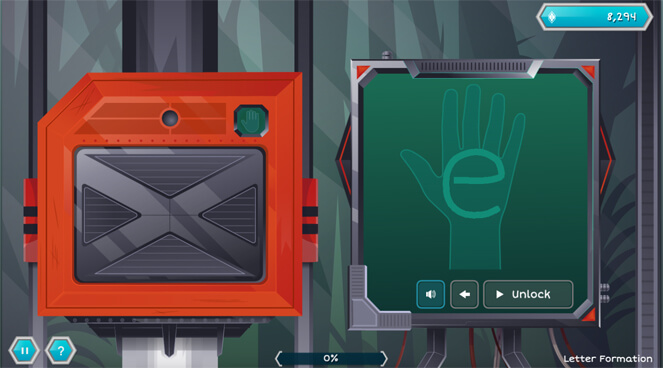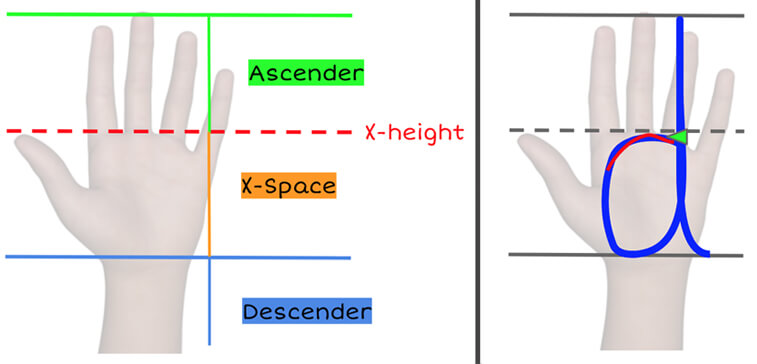Putting the Fun in Fundamental
Written by Sandie Barrie Blackley, MA/CCC
Published on April 16, 2021

Games are a vital learning tool in the Lexercise program for students with dyslexia and other learning differences. Built to meet specific teaching goals, our games are designed to encourage students to practice and learn fundamental principles of reading and spelling. We take those principles very seriously. But we also know that students are more likely to complete the necessary practice if they’re having a good time, so we work diligently to keep the fun in fundamental.
The latest addition to the lively, colorful, and instructive Lexercise games is “Letter Formation.” Our Chief Technology Officer and techno wizard, Rob Morris, recently talked to us about the game, its purpose, and some of the steps he takes when developing games like this. Here’s what he had to say:
“The scientific research states that letter-formation troubles are linked to difficulty with reading and spelling. When a child improves their letter formation, their reading and spelling typically improves, too. We saw an opportunity to create an interactive game that would support and instruct children who struggle with these letter formation skills.
“In this case, what we’re teaching isn’t so much how to write a letter as it is how to think about a letter. While many learners discover letter identities easily, kids with dyslexia often have difficulty distinguishing between z’s and s’s, b’s and d’s. What the Letter Formation game does is to make those distinctions explicit, to create a tangible, solid space in the student’s brain for each letter. Later, this will help them tie sounds to those letters, and then on to fluent reading. Letter identity is a key foundational concept that underpins all written language.
“Once we’ve decided to create a game to teach a particular fundamental principle, we look for a technical solution—the precise tools we need to train the student on the skill we’re reinforcing. With games, that means we also need to make it visual.
“In Letter Formation, we focused on letter pathways. Consistent with neuroscience, each letter is taught as a unique series of movements, with a specific entry point and a specific exit point. Students are taught to use the palm of their non-dominant hand as a mental guide to the proportions of letters. (This also means they always have a “handy” guide for practice when they’re not in front of a computer.)”

“For example, on the left image you see above, you’ll find a hand with reference points. And on the right image above you’ll find an illustration showing how a lowercase d would be written. The Letter Formation game offers instruction and allows the student to practice the strokes in their correct sequence.
“After we determined that letter movement pathways would serve as the game’s anchor, we started working with the technology to see how it could support our specific goals for this game. We had to figure out a way to capture the individual pathways. Even more challenging was finding a way to automatically score and correct student efforts. The game has to work on a variety of platforms, such as tablets, phones and touch-enabled laptops. And, we wanted the game to be interactive and instructive even for young learners who are still working on hand-eye coordination. The game is adaptive, beginning by simply providing the letter to trace and, when the student can do that, only the entry stroke location and finally, the letter’s formation without support.
“Once we figured out the technology, I worked with our artist, Iszzy, to add color and life to the game. After that, it was just about testing and tweaking until we had a fully operational game.
“We’re pushing the boundaries of self-guided learning, trying to innovate in an under-served space to make it easier for teachers and parents to help their kids. Since instruction time is so precious, we build a lot of the basic information into the system itself.
“At Lexercise, we are committed to building learning systems that engage and support children with reading and spelling challenges. The Letter Formation game is just one of the ways we do this, and while this is our most complex game to date, we’re excited to continue investing in ways to help our students thrive.”
Thanks, Rob! We’re excited to see what’s next in the games pipeline. Please visit the Lexercise games page and give Letter Formation a try!
[jetpack_subscription_form]
Improve Your Child’s Reading
Learn more about Lexercise today.
Schedule a FREE
15-minute consultation



Leave a comment